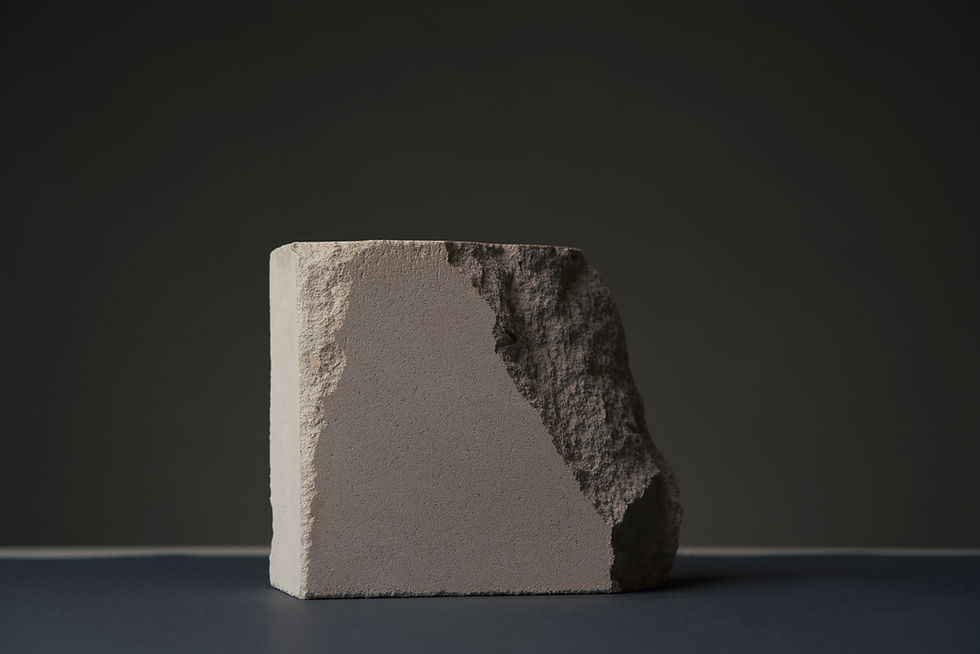Parashat Beha’alotecha: Overcoming Life’s Challenges Through Spiritual Routine
- Yudit Rosenbaum
- Jun 30
- 4 min read
Updated: Jul 22
As we open Parashat Beha’alotecha, we reach a turning point in the journey of Am Yisrael. After leaving Egypt, receiving the Torah at Har Sinai, and spending nearly a year camped at the foot of the mountain, Bnei Yisrael are now preparing to move forward—into the unknown terrain of the midbar.
This parsha is not just the beginning of physical movement. It marks the start of a new spiritual reality, one filled with uncertainty and challenge. But it is within this shift that we uncover timeless lessons on how to endure—and even thrive—during life’s most difficult transitions.
Leaving Har Sinai: A Spiritual Descent
At Har Sinai, despite the sin of the Golden Calf, Bnei Yisrael remained in close proximity to Divine revelation. The spiritual energy was palpable. But now, they are leaving that sacred space, and a new phase begins.
Chazal teach us, “Ma’aseh avot siman lebanim”—the experiences of our forefathers are blueprints for us. What happens in the midbar is more than history; it is a personal guide for how we confront our own life challenges.
Aharon and the Menorah: The Power of Daily Avodah
The parsha opens with the mitzvah of Aharon lighting the Menorah. Why is this mitzvah repeated here, after already being mentioned in Sefer Shemot and Parashat Emor?
Rashi explains: Aharon was disheartened that he did not participate in bringing inaugural gifts to the Mishkan, as the Nesi’im (princes) did. He longed to contribute something special. Hashem comforts him by saying, "Shelcha gedolah mishelahem"—“Yours is greater than theirs.” Why? Because Aharon’s service—lighting the Menorah—was daily, not a one-time act.
This teaches us something profound: Greatness is not only found in rare, elevated moments. True spiritual greatness lies in consistency—bringing light into the world, again and again, with renewed passion. Routine is not mundane when infused with kavanah.
“Beha’alotecha”: Raising the Flame
The Torah doesn’t say “when you light the Menorah,” but rather, “Beha’alotecha”—“when you raise up the flame.” Why this unusual language?
Rashi tells us: Aharon had to wait until the flame rose on its own. This imagery teaches us a lesson in personal growth: we must ignite our inner spark and nurture it until it becomes a self-sustaining flame.
In dark moments—when we are unsure of the future, when challenges overwhelm us—we must find the strength to shine from within. Like the eye, which sees through its darkest part, we, too, find clarity in our own darkness.
Yegata U’Metzata: The Miracle of the Menorah
Immediately after the mitzvah of lighting the Menorah, the Torah again describes how the Menorah was made—mikshah achat, from a single block of gold.
Moshe Rabbeinu struggled to figure out how to make it. It seemed impossible. In the end, he threw the gold into the fire and davened—and a miracle occurred. The Menorah emerged whole.
This is the secret of effort and reward: Yegata u’metzata ta’amin. If you labor, if you truly try, Hashem will help you. Your effort will be blessed—sometimes in miraculous ways.
Pesach Sheni: There's Always a Second Chance
Parashat Beha’alotecha also introduces Pesach Sheni—the offering for those who were unable to bring the Korban Pesach at the right time.
It teaches us that failure is not the end. Even if we miss a spiritual opportunity, Hashem grants us another. But we must take that opportunity seriously—there may not be a third chance.
This is a powerful reminder: Hashem wants our growth. He gives us second chances—but it's up to us to make them count.
The Spiritual Downfall Begins: Leaving Har Sinai
When Bnei Yisrael left Har Sinai, the Torah says, “Vayisu meHar Hashem”—“they journeyed from the mountain of Hashem.” It sounds like a simple geographical fact, but Chazal reveal a deeper truth.
They left “like a child running away from school.”
They should have left Har Sinai with awe, with gratitude, with a sense of loss. Instead, they were eager to move on—as if escaping a burden. This attitude set the stage for the series of failures that followed: complaints, ingratitude, and rebellion.
Avera Goreret Avera: One Misstep Leads to Another
After leaving Har Sinai with the wrong mindset, things spiraled.
The people became mit'onenim—murmurers—complaining about their fate.
Then came the demand for meat, despite the miraculous taste of the man.
The spiritual tension became too much. They looked for physical escapes.
These weren’t random events. One mistake paved the way for the next. When we don’t appreciate the spiritual moments in our lives, we become vulnerable to negativity and rebellion.
Our Challenge Today: Find Light in Routine, Growth in Struggle
Just like Am Yisrael in the desert, we all face daily tests—sometimes in the form of routine, other times in the form of crisis. Parashat Beha’alotecha urges us not to run away from these moments, but to embrace them.
Infuse your day-to-day mitzvot with new life.
Recognize the spark of holiness within your own soul.
Try—again and again. Hashem sees your effort.
And when it’s dark? Remember, the light comes through the darkness.
Conclusion: Hashem Is With Us—In Every Moment
Parashat Beha’alotecha teaches us that greatness comes not just in the highs of Har Sinai, but in the quiet, persistent flame of everyday life.
So don’t fear the desert. Don’t be disheartened by setbacks. And don’t forget the holiness of what you carry inside.
Light your Menorah every day—with heart, with hope, and with the belief that shetehei ha’shalhevet oleh me’eileha—your flame, with Hashem’s help, will rise on its own.




Comments